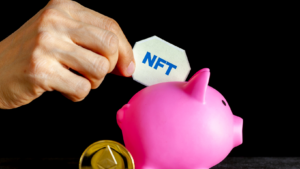In the whirlwind world of digital assets, NFTs and SFTs are making waves. But what sets them apart? Let’s delve into the heart of this tech-driven difference. NFTs, or Non-Fungible Tokens, have been in the limelight, revolutionizing the art world and beyond. On the other hand, SFTs, or Semi-Fungible Tokens, remain somewhat in the shadows, yet hold an intriguing potential. Understanding these concepts can unlock new perspectives on digital ownership and value. This article aims to shed light on the distinct characteristics of NFTs and SFTs, breaking down the complexities into digestible insights. Stay tuned as we navigate the digital seas of these fascinating tokens.
What is the difference between NFTs vs SFTs
 NFTs, or Non-Fungible Tokens, are unique crypto assets, indicating their singularity in the volatile realm of crypto-assets. A single piece of art, Cryptopunk 7804, for example, is an NFT. It’s singular, digitally existent – once purchased, it can’t be replaced with another. In sharp contrast, SFTs, semi-fungible tokens, stand for digital assets that hold the ability to morph from non-fungible to fungible, and vice versa. A ticket for a specific seat at a concert marks it as an SFT – unique until the event ends, later changing to an ordinary, exchangeable token. Optimally understanding NFTs and SFTs involves cognizance of their unique attributes, their functionality in the digital world, and their potential to redefine digital ownership.
NFTs, or Non-Fungible Tokens, are unique crypto assets, indicating their singularity in the volatile realm of crypto-assets. A single piece of art, Cryptopunk 7804, for example, is an NFT. It’s singular, digitally existent – once purchased, it can’t be replaced with another. In sharp contrast, SFTs, semi-fungible tokens, stand for digital assets that hold the ability to morph from non-fungible to fungible, and vice versa. A ticket for a specific seat at a concert marks it as an SFT – unique until the event ends, later changing to an ordinary, exchangeable token. Optimally understanding NFTs and SFTs involves cognizance of their unique attributes, their functionality in the digital world, and their potential to redefine digital ownership.
Key Differences Between NFTs and SFTs
 The key distinctions between NFTs and SFTs hinge on three main factors: uniqueness, utility, and transition.
The key distinctions between NFTs and SFTs hinge on three main factors: uniqueness, utility, and transition.
- Uniqueness: NFTs, symbolized by unique assets such as Cryptopunk 7804, can’t be replaced, setting them apart in the digital landscape. Contrarily, SFTs may have instances of both unique and replaceable properties, extending their application range, just like a concert ticket that can serve various roles.
- Utility: NFTs find their utility in the uniqueness of the asset. This peculiarity highlights their application in domains such as digital artwork, collectibles, and real estate. Conversely, SFTs function effectively in situations where the asset’s value changes over time or based on context, as in event tickets or temporary membership passes.
- Transition: SFTs exhibit the capability to transition between a non-fungible and fungible state, a characteristic absent in NFTs. This property introduces dynamicity to SFTs, making them adaptable to changing situations and needs.
Through these stark differences, NFTs and SFTs impart unique dimensions to the digital ownership paradigm, creating varying value propositions in different scenarios.
Implications of NFTs and SFTs in Different Industries
 Establishing firm roots in diverse domains, both NFTs and SFTs add unique value to industries. In the art industry, NFTs define ownership of digital art pieces such as Beeple’s “Everydays – The First 5000 Days” by establishing irreplaceable, digital signatures. Similarly, the music industry benefits from NFTs’ unique traits, facilitating transparent artist royalties such as Kings of Leon’s “When You See Yourself” album. Practical uses of SFTs also transcend domains, optimally utilized in event-based sectors. For instance, event organizers use SFTs for tickets. Each ticket, initially identical (fungible), becomes unique (non-fungible) once linked to a seat number. Gaming companies also favor SFTs for in-game items. A weapon, initially identical to others, gains unique traits as players level it up, transforming its state. These applications reflect the crafted match between each token’s characteristics and industry requirements, amplifying value in the digital asset realm.
Establishing firm roots in diverse domains, both NFTs and SFTs add unique value to industries. In the art industry, NFTs define ownership of digital art pieces such as Beeple’s “Everydays – The First 5000 Days” by establishing irreplaceable, digital signatures. Similarly, the music industry benefits from NFTs’ unique traits, facilitating transparent artist royalties such as Kings of Leon’s “When You See Yourself” album. Practical uses of SFTs also transcend domains, optimally utilized in event-based sectors. For instance, event organizers use SFTs for tickets. Each ticket, initially identical (fungible), becomes unique (non-fungible) once linked to a seat number. Gaming companies also favor SFTs for in-game items. A weapon, initially identical to others, gains unique traits as players level it up, transforming its state. These applications reflect the crafted match between each token’s characteristics and industry requirements, amplifying value in the digital asset realm.
Future Trends in NFTs and SFTs
As the digital landscape continues to evolve, so too will the roles of NFTs and SFTs. They’re not just transforming digital ownership but also revolutionizing industries. NFTs, with their unique attributes, are making waves in the art and music world. They’re changing how we perceive ownership and allowing for transparent royalties. On the flip side, SFTs are carving a niche in event-based sectors and gaming. Their ability to shift between fungible and non-fungible states makes them invaluable in these industries. Both NFTs and SFTs are poised to redefine the digital asset realm, showing us that the future of digital ownership is not just about ‘what’ is owned, but also ‘how’ it’s owned. The journey of these digital assets is just beginning, and it’s a journey that promises to be as exciting as it is transformative.



